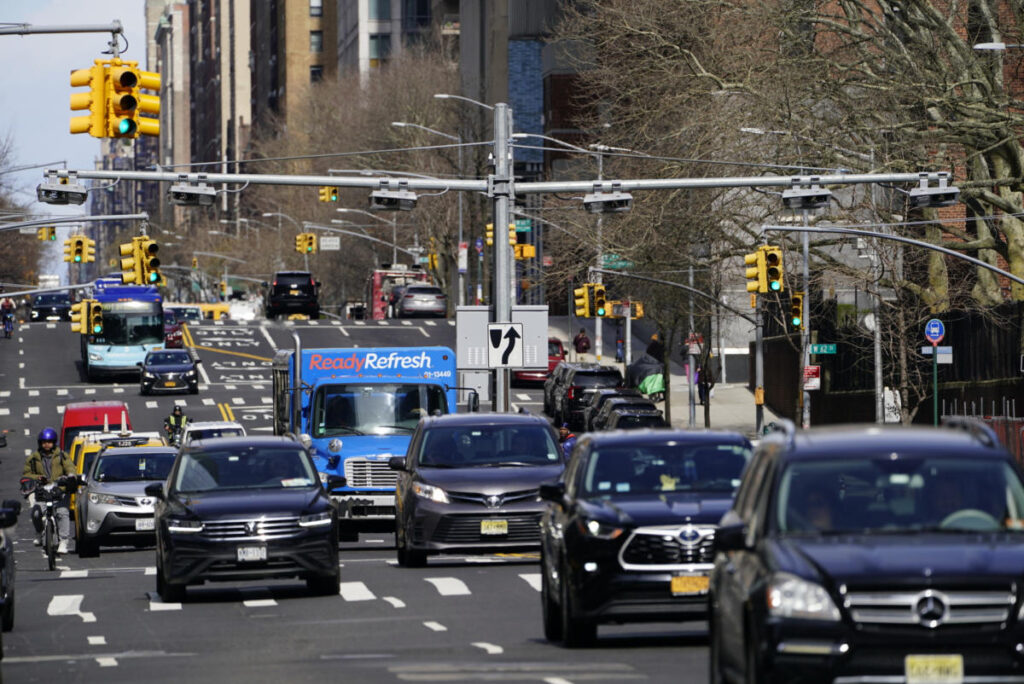The contentious issue of congestion pricing, often labeled a “lump of coal,” resurfaces amid financial strains faced by commuters already burdened by post-holiday debt. This taxation strategy, likened to an undead horror movie antagonist, refuses to be firmly defeated despite enduring public backlash and political challenges. Critics, such as former City Council member Kathryn Freed, assert that the proposal primarily aims to bolster funding for the Metropolitan Transportation Authority (MTA) rather than genuinely enhancing transportation services. As commuters receive their first credit card bills following holiday purchases, sentiments against the toll have become increasingly vocal, as highlighted by recent protests against the plan near federal courts in Manhattan.
Various stakeholders have rallied against the congestion pricing plan, with multiple lawsuits emerging from individuals and organizations including Staten Island Borough President Vito Fossella and the United Federation of Teachers. Their shared contention is that the toll would unfairly burden daily commuters, stifle small businesses, and exacerbate traffic and pollution problems by redistributing them across different city regions. Advocates of congestion pricing counter that the financial model seeks to alleviate city traffic congestion and contribute to the maintenance and improvement of public transportation infrastructure.
Public sentiment regarding costs has been particularly pronounced, especially following recent elections where voters showed heightened concern for everyday expenses over broader societal issues. Governor Kathy Hochul, who initially paused the plan in June over concerns regarding its financial impact on working-class families, reiterated that a $15 toll could severely strain the budgets of average earners. This past hesitancy raises questions about the motivations behind reviving the pricing plan at a time when many individuals are grappling with economic hardships, highlighting a possible disconnect between policymakers and constituents.
The current proposal presents a reduced toll of $9, but this still constitutes an increase compared to existing fees, which have raised eyebrows among critics. The urgency surrounding the plan appears to be politically charged, with supporters eager to enact the toll before the impending inauguration of President-elect Donald Trump. Trump’s anticipated administration poses a significant threat to the implementation of congestion pricing, as he has vocally opposed such measures, labeling them as detrimental financially and harmful to business interests in New York City.
Trump’s vocal disapproval resonates with a large segment of the New York population, marking an unusual point of agreement between the former president and many city residents. His warnings of the toll being a “business killer” emphasize the potential repercussions for commerce in Manhattan. This opposition reflects broader concerns about how additional fees will impact not just commuters but the economic vitality of the area as well, suggesting that business interests could become key players in the ongoing discourse surrounding congestion pricing.
As legal challenges and public protests mount, the future of congestion pricing hangs in the balance. The debate encapsulates a broader struggle over urban policy, transportation funding, and the real-world implications for citizens’ daily lives. With increased traffic congestion, environmental considerations, and public transit funding at stake, the outcome of this contentious pricing scheme could shape New York City’s transportation landscape for years to come. As protests continue and lawsuits unfold, New Yorkers will be watching closely to see how their representatives navigate these pressing issues, as the tension between fiscal responsibility and public service remains a central theme in the dialogue surrounding congestion pricing.

